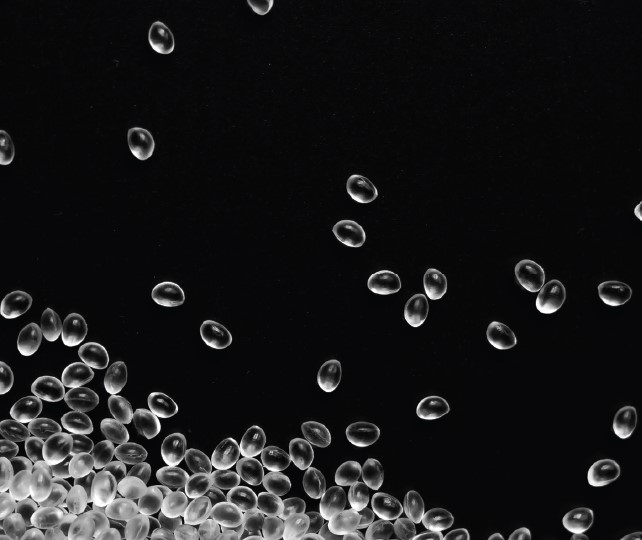Polyvinyl acetate (PVA) is a synthetic polymer that belongs to the family of polyvinyl esters. It is a type of thermoplastic polymer that is widely used in various applications due to its adhesive and film-forming properties. PVA was discovered in 1912 by Fritz Klatte, a prominent German chemist. It is an aliphatic rubbery synthetic polymer with chemical formula (C₄H₆O₂)n which belongs to the polyvinyl ester family. PVA is produced by polymerizing vinyl acetate monomers through a process called radical polymerization.

Chemical Structure
PVA is composed of repeating units of vinyl acetate monomers, which have the chemical structure CH₂=CHO₂CCH₃. The polymerization process involves linking these monomers together through their double bonds to form long chains.
Polyvinyl acetate (PVA) does not typically cross-link under normal conditions due to the nature of its chemical structure and the way it polymerizes. Cross-linking involves the formation of covalent bonds between polymer chains, creating a three-dimensional network. However, the structure of PVA and the conditions under which it is commonly used do not favor extensive cross-linking for a variety of reasons.
First of all, PVA is synthesized through a free radical polymerization mechanism. During polymerization, vinyl acetate monomers undergo a chain-growth process, where reactive species known as free radicals initiate the formation of the polymer chain. This mechanism tends to produce linear polymer chains without the necessary reactive groups for extensive
cross-linking. Secondly, the vinyl acetate monomer used in PVA synthesis has only one reactive site for polymerization, which is the vinyl group (-CH=CH2). This group is involved in forming the polymer backbone. It doesn’t possess multiple functional groups that could readily participate in cross-linking reactions. Furthermore, in many applications, PVA is often used in water-based solutions or dispersions. To prevent premature cross-linking, stabilizers or inhibitors are often added to the formulation. These stabilizers help keep the polymer chains from reacting with each other until desired conditions are met.
PVA is also inherently hydrophilic due to the presence of acetate groups along its polymer chain. This hydrophilicity can hinder the formation of stable crosslinks, as water molecules could interfere with crosslinking reactions. While PVA itself doesn’t naturally cross-link under standard conditions, it is possible to modify its properties to promote cross-linking. For example, by introducing functional groups that can react with each other, such as hydroxyl groups, crosslinking can be induced under specific conditions. Additionally,
chemical cross-linking agents or external stimuli like heat or radiation can be employed to promote cross-linking in PVA-based materials if desired for specific applications.
Physical Properties
Polyvinyl acetate is a colorless or pale yellow solid in its pure form. It is soluble in various organic solvents, such as acetone, ethyl acetate, and toluene. PVA also has relatively low melting and softening points, making it a thermoplastic material that can be melted and reformed when heated. The degree of polymerization of PVA ranges from 100 to 5000. It
has the ability to undergo alkali treatment, leading to the gradual formation of both polyvinyl alcohol and alkali acetate.
Preparation
The manufacturing process of PVA generally involves the free radical polymerization of vinyl acetate, itself a polymer. Initially, researchers extract this compound and subsequently modify its configuration slightly. This modification is frequently conducted within a water medium. Normally, individual units of vinyl acetate monomers undergo reactions while submerged in water, yielding a milky-white emulsion. This emulsion can typically be promptly transformed into a polyvinyl acetate polymer by separating it from the water and
enabling it to reach a stable state at room temperature.
Applications
Adhesives: PVA is widely used as the main ingredient in white glue, wood glue, and school glue. These adhesives are commonly used for bonding paper, wood, fabric, and various porous surfaces.
Paper and Packaging Industry: Polyvinyl acetate is used in the paper industry to improve the properties of paper coatings, such as providing glossy finishes and enhancing ink receptivity. It’s also used in packaging materials and labels.
Textile and Nonwoven Industry: PVA can be used in textile and nonwoven applications to provide stiffness and strength to fabrics and materials.
Paints and Coatings: It is used in some paints and coatings as a binder to hold the pigments together and improve adhesion to surfaces.
Carpentry and Woodworking: PVA-based wood glues are commonly used in carpentry and woodworking due to their strong adhesive properties and ease of use.
Advantages
PVA-based adhesives are easy to apply, making them suitable for various bonding applications.PVA also stands out for its versatility, therefore it can be used with a wide range of materials, including paper, wood, fabric, and more. It typically dries quickly, which is advantageous for applications where fast bonding is required. Furthermore, PVA is generally considered safe and non-toxic once it has dried and cured.
Prepared by: Murat Soygür





